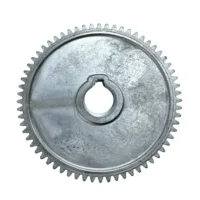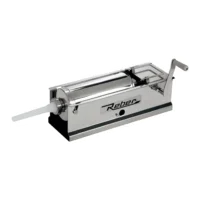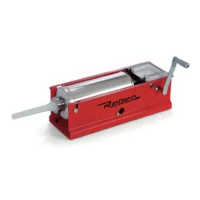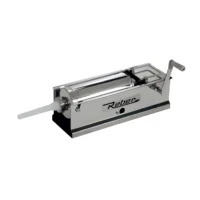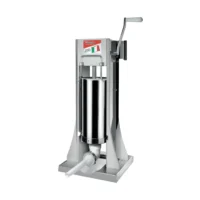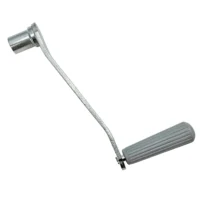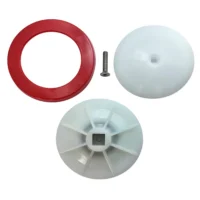Manual bagging machines
Manual sausage fillers are essential tools in meat processing, used to fill the casings of sausages and other sausages with a mixture of meat and spices.
161,00€ – 559,00€ VAT included
This product has multiple variants. The options may be chosen on the product page
137,00€ – 375,00€ VAT included
This product has multiple variants. The options may be chosen on the product page
225,00€ – 559,00€ VAT included
This product has multiple variants. The options may be chosen on the product page
178,00€ – 559,00€ VAT included
This product has multiple variants. The options may be chosen on the product page
Here is an overview of how they work:
- Meat preparation: Before starting, the meat is minced and mixed with spices and other desired ingredients. This mixture is then loaded into the hopper of the bagging machine.
- Loading the machine: The hopper, or upper container of the filler, is filled with the meat mixture. Some models have a larger capacity, allowing large quantities to be processed in a single process.
- Enclosure attachmentA natural (such as casing) or artificial casing is placed on the nozzle of the filler. Natural casings are often preferred for their ability to expand and contract during cooking.
- Manual driveUsing a hand crank or lever, the operator turns or pushes the mechanism to lower the meat mixture through the nozzle and fill the casing. This process requires some skill to ensure that the filling is even and without air bubbles.
- Forming sausages: While the casing is being filled, the operator can twist the casing at regular intervals to create individual sausages of uniform size. This requires coordination and practice to achieve professional results.
- Fixing: Once the casing is full and the sausages are formed, the ends of the casings are tied or closed to prevent the meat mixture from escaping.
Manual bagging machines are appreciated for their simplicity, ease of use and maintenance, making them ideal for small productions or for enthusiasts who want more control over the bagging process.
The various types of bagging machines
Manual sausage fillers are ideal tools for those who want to make homemade sausages conveniently and with high quality results.
They are characterised by their robust construction and simple operation. The bagging machines are distinguished mainly by the materials used in their construction: painted or in stainless steel.
Painted manual bagging machines
- Material: The structure is made of painted steel, which provides strength and corrosion resistance. The paint, which is usually food-grade and wear-resistant, protects the metal underneath.
- Design: They are characterised by a traditional appearance, with a smooth and even finish thanks to the painted coating.
- Intended use: Ideal for home or semi-professional use, they offer an excellent combination of quality and price.
- Cleaning: Although they are durable, they require care during cleaning to preserve the painted coating, which could be scratched if treated too aggressively.
- Price: They tend to cost less than the stainless steel version, making them a cheaper choice
- Bagging tube18/10 stainless steel for foodstuffs
Manual stainless steel bagging machines
- Material: Constructed entirely of stainless steel, an extremely corrosion-resistant and easy-to-clean material ideal for food contact.
- Design: They have a modern, professional look thanks to the polished or satin finish of the steel.
- Intended use: Perfect for more frequent and intensive use, even in semi-professional or professional contexts, thanks to their high durability.
- Cleaning: Stainless steel is easy to sanitise and can be washed more thoroughly without risk of damage.
- Price: The cost is generally higher than the painted versions, but is compensated for by the greater longevity and practicality.
- Bagging tube18/10 stainless steel for foodstuffs
Features common to both versions
- Capacity: They are available in different sizes (e.g. 3 kg, 5 kg, etc.) to meet the requirements of sausage production in small or large quantities.
- Mechanism of operation: Equipped with a rack or piston system, they ensure uniform extrusion of the compound.
- Accessories included: They are supplied with various funnels of different sizes, ideal for making sausages of different diameters (such as sausages, hunks, etc.).
- Stability: The base is designed to ensure optimum stability during use, often equipped with fixing systems to the work surface.
- Ease of use: Thanks to the hand lever, operation is intuitive and requires little effort.
Which bagging machine to choose?
- Painted bagging machines: They are ideal for those looking for an economical solution for occasional or hobby use.
- Stainless steel bagging machines: Perfect for those who want more durability, easy maintenance and a more professional looking product.
The quality of the final product depends largely on the skill of the operator and the quality of the ingredients used.
Standard horizontal bagging machines and vertical bagging machines
Le manual bagging machines can be distinguished into two main configurations: horizontal e verticals. The choice between the two models depends on the requirements of use, the space available and the type of sausage to be made.
Manual horizontal bagging machines
- Design and operation:
The structure is developed horizontally, with the cylinder (or filling chamber) arranged parallel to the work surface. During use, the dough is pushed horizontally through the funnel with the movement of the lever.
- Stability:
They must be firmly fixed to the work surface, often by means of clamps or non-slip feet, to prevent shifting during use.
- Ease of use:
Ideal for bagging small quantities of meat at a time. They are easier to handle than verticals for those with strength or control problems, as the hand lever is easier to use.
- Space required:
They require more length on the worktop but have a low height, making them suitable for low floors or rooms with limited ceilings (e.g. under-shelves).
- Applications:
Perfect for larger sausages, as the horizontal arrangement allows for greater uniformity of pressure.
Advantages:
- Easier to use for those seeking a constant and regular extrusion.
- They require less physical strength, especially in models with a well-balanced lever.
- Good for low spaces, such as counters or kitchen tables.
Disadvantages:
- They occupy more floor space in terms of length.
- Slightly less versatile for large volumes than verticals.
Vertical manual bagging machines
- Design and operation:
The structure is developed vertically, with the cylinder positioned perpendicular to the work surface. The dough is pushed downwards by means of a lever or rack system and then passes into the funnel.
- Stability:
The wide, solid base ensures stability during use, without the need for complex fixings.
- Ease of use:
They require a little more force to operate than horizontal ones, as the lever has to push the dough downwards. However, more advanced models often incorporate effort-reducing mechanisms.
- Space required:
They are more compact in terms of worktop space, but have a greater height, which can be limiting in rooms with little vertical space.
- Applications:
Ideal for smaller sausages (e.g. sausages, cacciatorini) and for larger quantity production, thanks to the ability of some models to accommodate larger cylinders.
Advantages:
- More compact and space-saving in terms of length.
- Perfect for frequent production or for those who need to process larger quantities.
- Easily refillable thanks to vertical access to the cylinder.
Disadvantages:
- They may require more physical strength to push the dough.
- Less suitable for those with limited height.
Which filler to choose between vertical and horizontal?
- Horizontal:
If you have limited space in terms of height or prefer a machine that is easier to manoeuvre, especially for small quantity production.
- Vertical:
If you need to process large quantities of meat, you prefer a machine that is compact in length, or if you frequently make small sausages.
Professional manual bagging machines
The range of bagging machines is also completed by the professional line.
All vertical bagging machines are also professional.
The professional horizontal line, like the vertical ones, is characterised by the welded sealing of the gears. In particular, the entire gear and rack block at the back (or at the top, in vertical manual bagging machines) is closed by a casing.
This protection prevents dirt and food residues from coming into contact with the gears, soiling them and contaminating the gears.
In this way, this area can also be cleaned, thereby better fulfilling the requirements of the regulations on the wholesomeness of prepared food.
 Paini Nove sink mixer swivel spout 09CR572Data stimata di spedizione: 23/04/2025 - 24/04/20252 × 69,00€
Paini Nove sink mixer swivel spout 09CR572Data stimata di spedizione: 23/04/2025 - 24/04/20252 × 69,00€ Gallipoli iron anthracite grey bench BEF24GData stimata di spedizione: 06/05/2025 - 16/05/20251 × 209,00€
Gallipoli iron anthracite grey bench BEF24GData stimata di spedizione: 06/05/2025 - 16/05/20251 × 209,00€ Reber Professional 55 professional vacuum machine 9712NELData stimata di spedizione: 28/04/2025 - 05/05/20251 × 479,00€
Reber Professional 55 professional vacuum machine 9712NELData stimata di spedizione: 28/04/2025 - 05/05/20251 × 479,00€ Reber meat mincer accessory No. 12 cast iron optional 8811NData stimata di spedizione: 28/04/2025 - 05/05/20251 × 113,00€
Reber meat mincer accessory No. 12 cast iron optional 8811NData stimata di spedizione: 28/04/2025 - 05/05/20251 × 113,00€ Second-rate chrome-plated blade for slicer mm 275Data stimata di spedizione: 23/04/2025 - 24/04/20251 × 49,00€
Second-rate chrome-plated blade for slicer mm 275Data stimata di spedizione: 23/04/2025 - 24/04/20251 × 49,00€ Reber meat grinder 22 electric 600 W HP 0.80 9500N long neckData stimata di spedizione: 23/04/2025 - 24/04/20251 × 449,00€
Reber meat grinder 22 electric 600 W HP 0.80 9500N long neckData stimata di spedizione: 23/04/2025 - 24/04/20251 × 449,00€ Paini Pilot concealed shower mixer chrome 04CR690Data stimata di spedizione: 23/04/2025 - 24/04/20251 × 34,00€
Paini Pilot concealed shower mixer chrome 04CR690Data stimata di spedizione: 23/04/2025 - 24/04/20251 × 34,00€ Reber tomato squeezer accessory no. 5 optional 8700NData stimata di spedizione: 23/04/2025 - 24/04/20252 × 114,00€
Reber tomato squeezer accessory no. 5 optional 8700NData stimata di spedizione: 23/04/2025 - 24/04/20252 × 114,00€ REBER Electric Gear Motor No. 5 HP 1.50 1200 Watt 9603NSP/S STEEL GEARSData stimata di spedizione: 28/04/2025 - 05/05/20252 × 539,00€
REBER Electric Gear Motor No. 5 HP 1.50 1200 Watt 9603NSP/S STEEL GEARSData stimata di spedizione: 28/04/2025 - 05/05/20252 × 539,00€ REMOVER CALCARIO scented limescale remover for irons 750 mlData stimata di spedizione: 23/04/2025 - 24/04/20251 × 4,00€
REMOVER CALCARIO scented limescale remover for irons 750 mlData stimata di spedizione: 23/04/2025 - 24/04/20251 × 4,00€ REBER set of 4 bagging funnels for bagging machines mod.6508AData stimata di spedizione: 23/04/2025 - 24/04/20251 × 14,20€
REBER set of 4 bagging funnels for bagging machines mod.6508AData stimata di spedizione: 23/04/2025 - 24/04/20251 × 14,20€ REBER stainless steel drip chute tomato squeezer 5 5600NMData stimata di spedizione: 23/04/2025 - 24/04/20251 × 28,00€
REBER stainless steel drip chute tomato squeezer 5 5600NMData stimata di spedizione: 23/04/2025 - 24/04/20251 × 28,00€ Imperia iPasta Nera manual pasta sheetersData stimata di spedizione: 23/04/2025 - 24/04/20251 × 69,00€
Imperia iPasta Nera manual pasta sheetersData stimata di spedizione: 23/04/2025 - 24/04/20251 × 69,00€ REBER tomato squeezer propeller 3 acetal resin 3001PData stimata di spedizione: 23/04/2025 - 24/04/20251 × 21,12€
REBER tomato squeezer propeller 3 acetal resin 3001PData stimata di spedizione: 23/04/2025 - 24/04/20251 × 21,12€ Electronic board for REBER SALVASPESA pre-2011 model 6854SAData stimata di spedizione: 23/04/2025 - 24/04/20251 × 49,95€
Electronic board for REBER SALVASPESA pre-2011 model 6854SAData stimata di spedizione: 23/04/2025 - 24/04/20251 × 49,95€ Reber Professional 40 Stainless steel vacuum machine liquid protection filter 9714NELFData stimata di spedizione: 28/04/2025 - 05/05/20251 × 499,00€
Reber Professional 40 Stainless steel vacuum machine liquid protection filter 9714NELFData stimata di spedizione: 28/04/2025 - 05/05/20251 × 499,00€ Wall-mounted pergola Kansas 3x4 iron polyester cover GAZ361Data stimata di spedizione: 06/05/2025 - 16/05/20251 × 279,00€
Wall-mounted pergola Kansas 3x4 iron polyester cover GAZ361Data stimata di spedizione: 06/05/2025 - 16/05/20251 × 279,00€ Paini Cox chromed bidet mixer 78CR306OData stimata di spedizione: 23/04/2025 - 24/04/20251 × 105,00€
Paini Cox chromed bidet mixer 78CR306OData stimata di spedizione: 23/04/2025 - 24/04/20251 × 105,00€ ARTUS C25 combined tomatoes squeezer + meat grinder 550 wattsData stimata di spedizione: 23/04/2025 - 24/04/20251 × 127,52€
ARTUS C25 combined tomatoes squeezer + meat grinder 550 wattsData stimata di spedizione: 23/04/2025 - 24/04/20251 × 127,52€ Pack of 5 Vorwerk Folletto VK 200 - 201 - 220S microfibre bags TSIH15Data stimata di spedizione: 23/04/2025 - 24/04/20251 × 14,00€
Pack of 5 Vorwerk Folletto VK 200 - 201 - 220S microfibre bags TSIH15Data stimata di spedizione: 23/04/2025 - 24/04/20251 × 14,00€ REBER electric slicer blade 250 mm motor 140 Watt LF25Data stimata di spedizione: 28/04/2025 - 05/05/20251 × 455,99€
REBER electric slicer blade 250 mm motor 140 Watt LF25Data stimata di spedizione: 28/04/2025 - 05/05/20251 × 455,99€ Set of 3 cat dog cage carriers in 3 sizes MOD. L70BData stimata di spedizione: 06/05/2025 - 16/05/20251 × 159,00€
Set of 3 cat dog cage carriers in 3 sizes MOD. L70BData stimata di spedizione: 06/05/2025 - 16/05/20251 × 159,00€ BOX dog enclosure 300x200x150hData stimata di spedizione: 06/05/2025 - 16/05/20251 × 1.535,00€
BOX dog enclosure 300x200x150hData stimata di spedizione: 06/05/2025 - 16/05/20251 × 1.535,00€ Reber electric grater Fido 9250NS silver satin greyData stimata di spedizione: 23/04/2025 - 24/04/20251 × 99,00€
Reber electric grater Fido 9250NS silver satin greyData stimata di spedizione: 23/04/2025 - 24/04/20251 × 99,00€ Reber small toothed pin old bagging machine 6511OLDData stimata di spedizione: 23/04/2025 - 24/04/20251 × 40,40€
Reber small toothed pin old bagging machine 6511OLDData stimata di spedizione: 23/04/2025 - 24/04/20251 × 40,40€
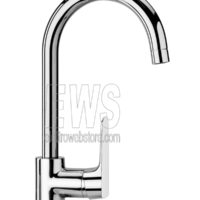 Paini Nove sink mixer swivel spout 09CR572
Paini Nove sink mixer swivel spout 09CR572 Gallipoli iron anthracite grey bench BEF24G
Gallipoli iron anthracite grey bench BEF24G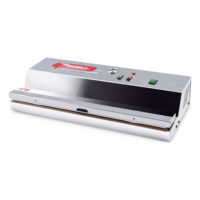 Reber Professional 55 professional vacuum machine 9712NEL
Reber Professional 55 professional vacuum machine 9712NEL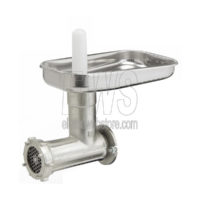 Reber meat mincer accessory No. 12 cast iron optional 8811N
Reber meat mincer accessory No. 12 cast iron optional 8811N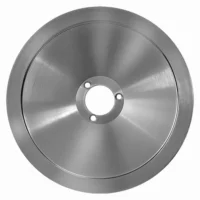 Second-rate chrome-plated blade for slicer mm 275
Second-rate chrome-plated blade for slicer mm 275 Reber meat grinder 22 electric 600 W HP 0.80 9500N long neck
Reber meat grinder 22 electric 600 W HP 0.80 9500N long neck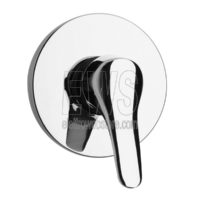 Paini Pilot concealed shower mixer chrome 04CR690
Paini Pilot concealed shower mixer chrome 04CR690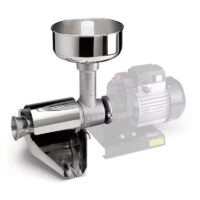 Reber tomato squeezer accessory no. 5 optional 8700N
Reber tomato squeezer accessory no. 5 optional 8700N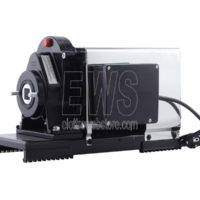 REBER Electric Gear Motor No. 5 HP 1.50 1200 Watt 9603NSP/S STEEL GEARS
REBER Electric Gear Motor No. 5 HP 1.50 1200 Watt 9603NSP/S STEEL GEARS REMOVER CALCARIO scented limescale remover for irons 750 ml
REMOVER CALCARIO scented limescale remover for irons 750 ml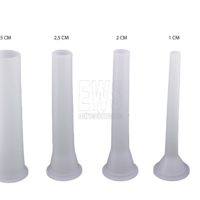 REBER set of 4 bagging funnels for bagging machines mod.6508A
REBER set of 4 bagging funnels for bagging machines mod.6508A REBER stainless steel drip chute tomato squeezer 5 5600NM
REBER stainless steel drip chute tomato squeezer 5 5600NM Imperia iPasta Nera manual pasta sheeters
Imperia iPasta Nera manual pasta sheeters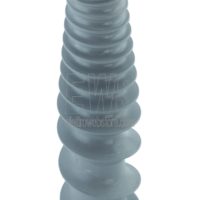 REBER tomato squeezer propeller 3 acetal resin 3001P
REBER tomato squeezer propeller 3 acetal resin 3001P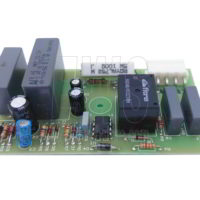 Electronic board for REBER SALVASPESA pre-2011 model 6854SA
Electronic board for REBER SALVASPESA pre-2011 model 6854SA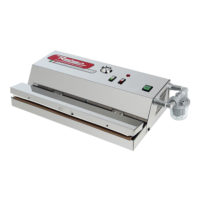 Reber Professional 40 Stainless steel vacuum machine liquid protection filter 9714NELF
Reber Professional 40 Stainless steel vacuum machine liquid protection filter 9714NELF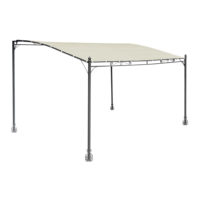 Wall-mounted pergola Kansas 3x4 iron polyester cover GAZ361
Wall-mounted pergola Kansas 3x4 iron polyester cover GAZ361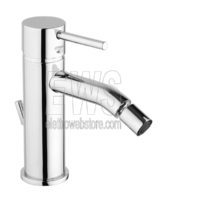 Paini Cox chromed bidet mixer 78CR306O
Paini Cox chromed bidet mixer 78CR306O ARTUS C25 combined tomatoes squeezer + meat grinder 550 watts
ARTUS C25 combined tomatoes squeezer + meat grinder 550 watts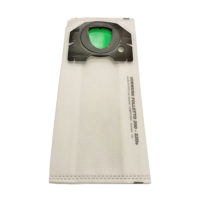 Pack of 5 Vorwerk Folletto VK 200 - 201 - 220S microfibre bags TSIH15
Pack of 5 Vorwerk Folletto VK 200 - 201 - 220S microfibre bags TSIH15 REBER electric slicer blade 250 mm motor 140 Watt LF25
REBER electric slicer blade 250 mm motor 140 Watt LF25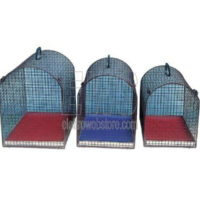 Set of 3 cat dog cage carriers in 3 sizes MOD. L70B
Set of 3 cat dog cage carriers in 3 sizes MOD. L70B BOX dog enclosure 300x200x150h
BOX dog enclosure 300x200x150h Reber electric grater Fido 9250NS silver satin grey
Reber electric grater Fido 9250NS silver satin grey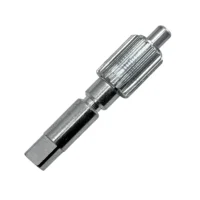 Reber small toothed pin old bagging machine 6511OLD
Reber small toothed pin old bagging machine 6511OLD
